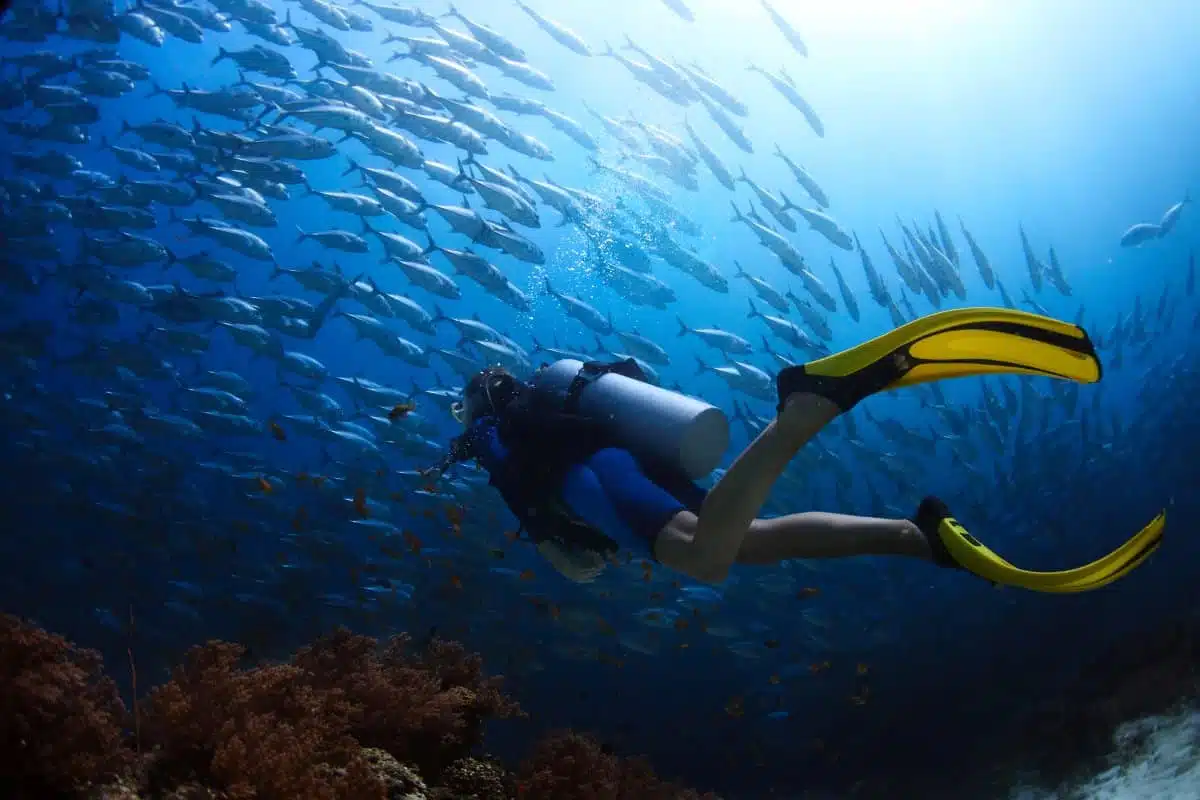Diving opens up a new world of exploration, offering a unique glimpse into the underwater environment that few experience. Whether it’s the magic of vibrant coral reefs, the thrill of encountering marine life, or the challenge of mastering buoyancy, diving is a multifaceted activity that appeals to adventure seekers of all levels. This guide explores various essential aspects and destinations for learning how to dive, designed to inspire and inform your underwater journey.
Understanding Scuba Basics
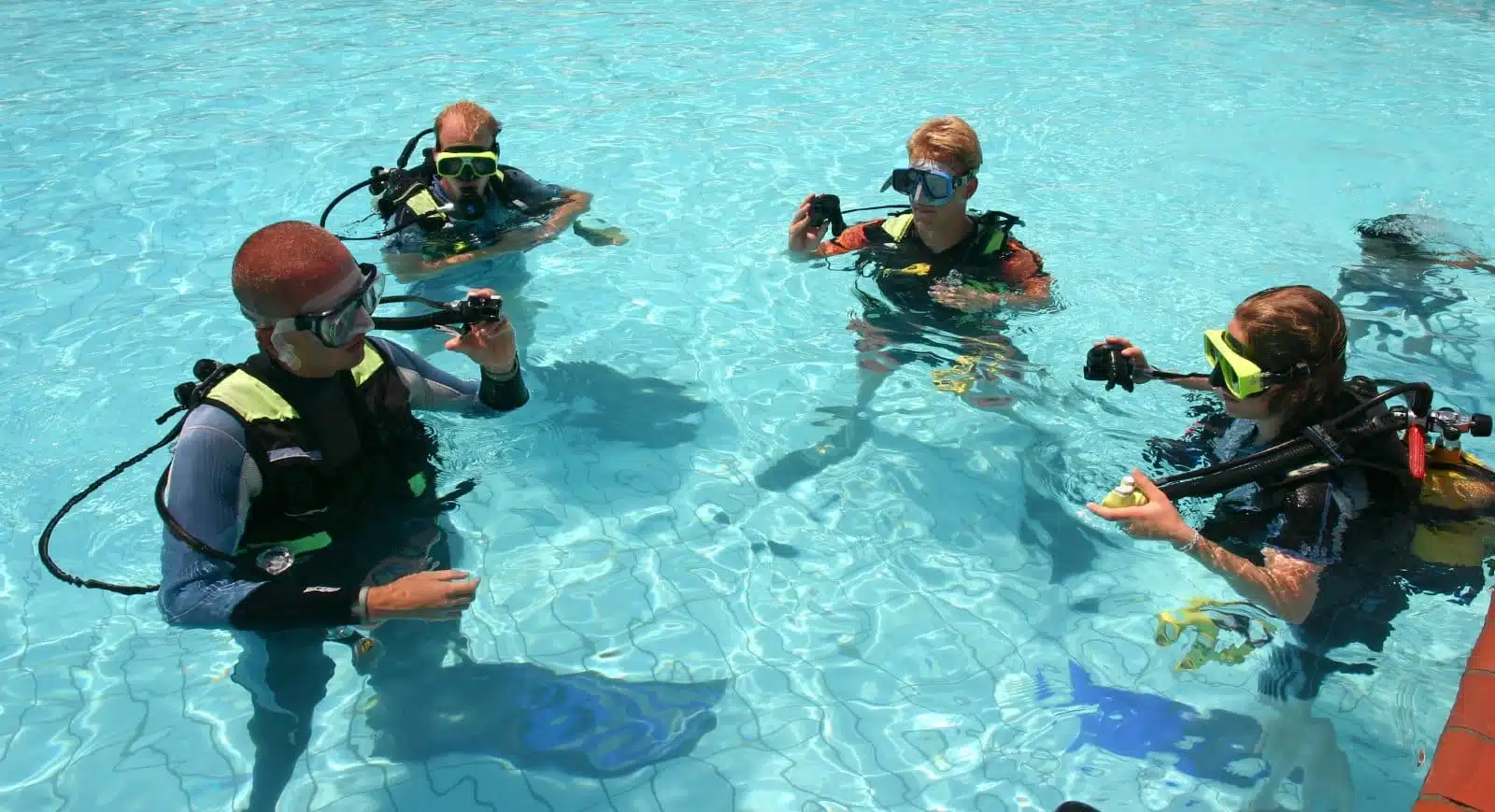
Image Credit: Shutterstock / tramper79
Taking the initial plunge and grasping the basics of scuba diving is crucial. This includes familiarizing yourself with the equipment, understanding pressure changes, learning about buoyancy control, and mastering breathing underwater. A certified course from organizations like PADI or NAUI provides comprehensive training, covering theoretical knowledge and practical skills in a controlled environment, ensuring divers are well-prepared for their first open-water dive.
Insider’s Tip: Start with a ‘Discover Scuba Diving’ experience if you’re unsure about committing to a full certification course. This introductory dive allows you to learn basic concepts and skills under the direct supervision of a professional, giving you a taste of what scuba diving offers without the full commitment.
PADI Discover Scuba Diving
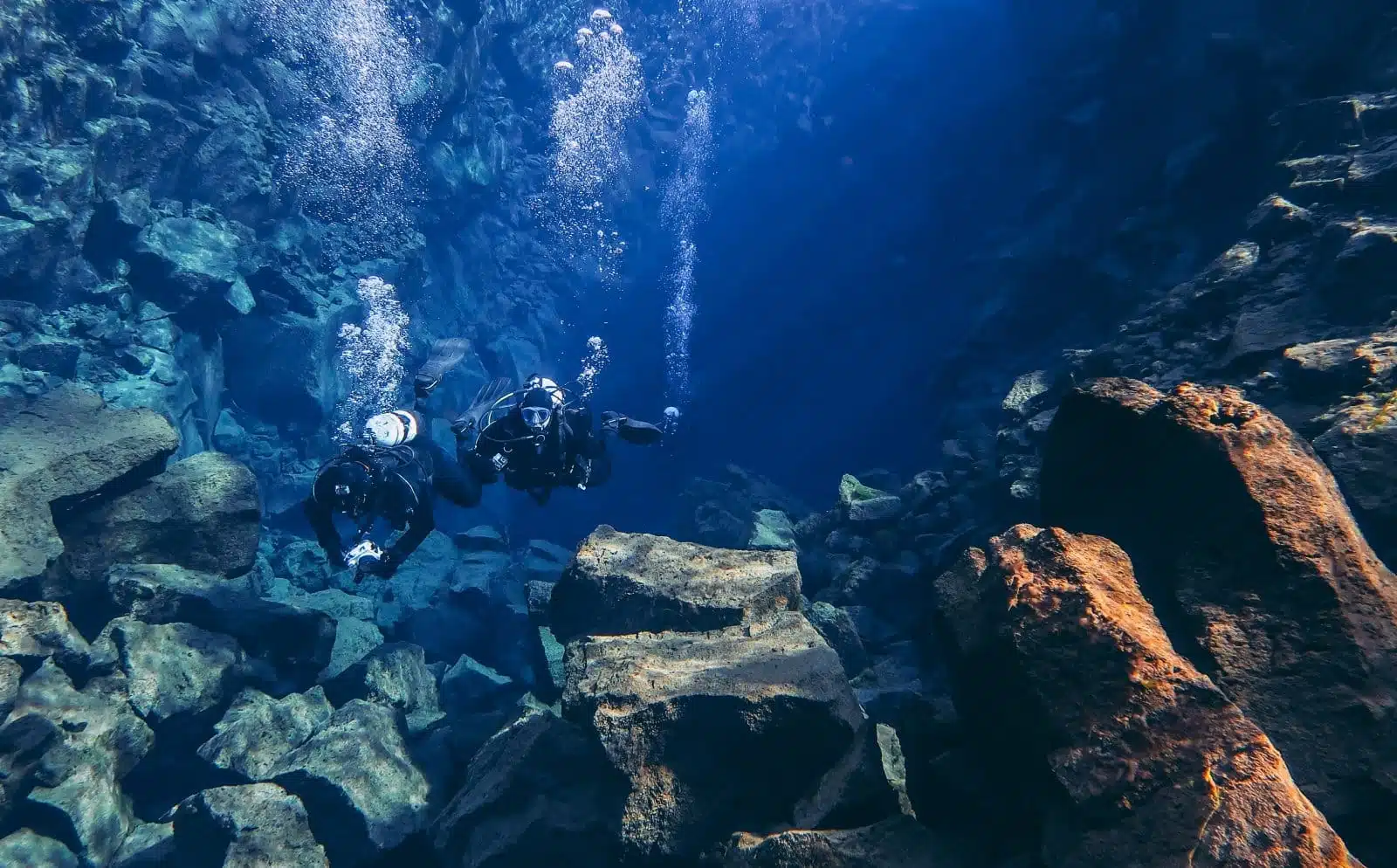
Image Credit: Shutterstock / VicPhotoria
The PADI Discover Scuba Diving experience is an introductory dive for those curious about scuba diving but not yet ready to commit to a certification course. This program is designed to familiarize novices with the basic principles and procedures needed to dive under the direct supervision of a PADI Professional. Participants learn about the equipment used in scuba diving, basic safety rules, and how to breathe underwater. The experience typically includes a brief theory session, a pool or confined water dive to practice basic skills, and an optional open water dive. It’s an opportunity to explore underwater in a controlled and safe environment, making it an excellent first step for those intrigued by the marine world.
Insider’s Tip: Choose a dive center or location that offers access to vibrant underwater environments, even at shallow depths. This ensures that your Discover Scuba Diving experience is educational and visually stunning, enhancing the excitement and enjoyment of your first dive. Some locations provide encounters with remarkable marine life or underwater sculptures, making your dive unforgettable.
PADI Open Water Diver Course
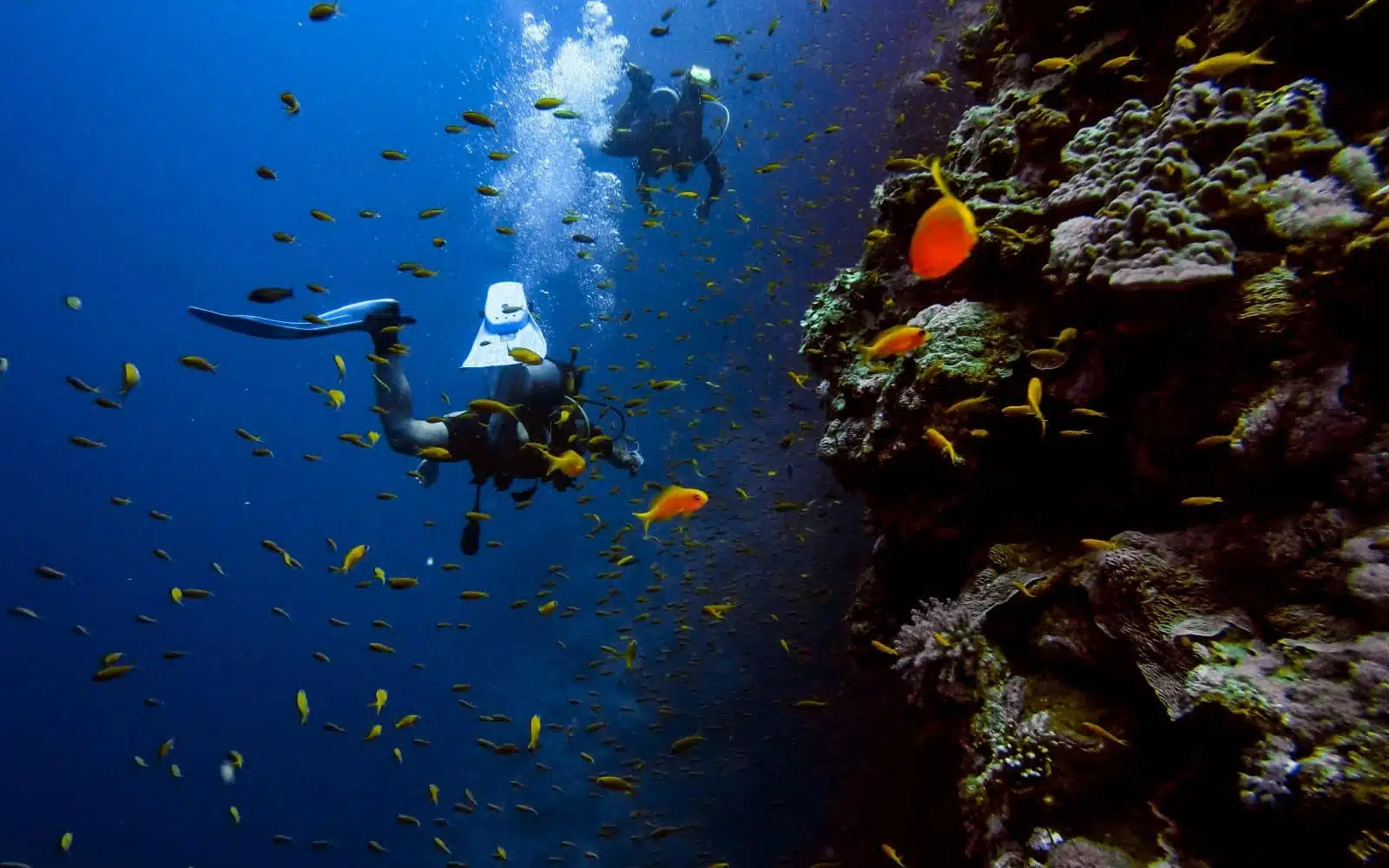
Image Credit: Pexels / Aviv Perets
The PADI Open Water Diver course is the world’s most popular scuba certification, marking your entry into the global community of divers. This course teaches you the fundamental knowledge and skills needed to dive independently, up to a depth of 18 meters/60 feet, with a buddy. The curriculum is divided into three main sections: Knowledge Development, to understand basic principles of scuba diving; Confined Water Dives, to learn basic scuba skills; and Open Water Dives, to use your skills and explore. You’ll learn to set up your scuba gear, manage buoyancy, navigate underwater, and deal with potential problems. The course is typically conducted over four to five days and includes dives in open-water settings, allowing students to experience a variety of diving conditions.
Insider’s Tip: When selecting a location for your Open Water Diver course, consider destinations known for clear waters and abundant marine life. This makes the learning process more enjoyable and enriches your initial diving experiences. Additionally, inquire about the instructor-to-student ratio to ensure you receive personalized attention, enhancing your learning outcome and overall satisfaction with the course.
Further Diving Courses
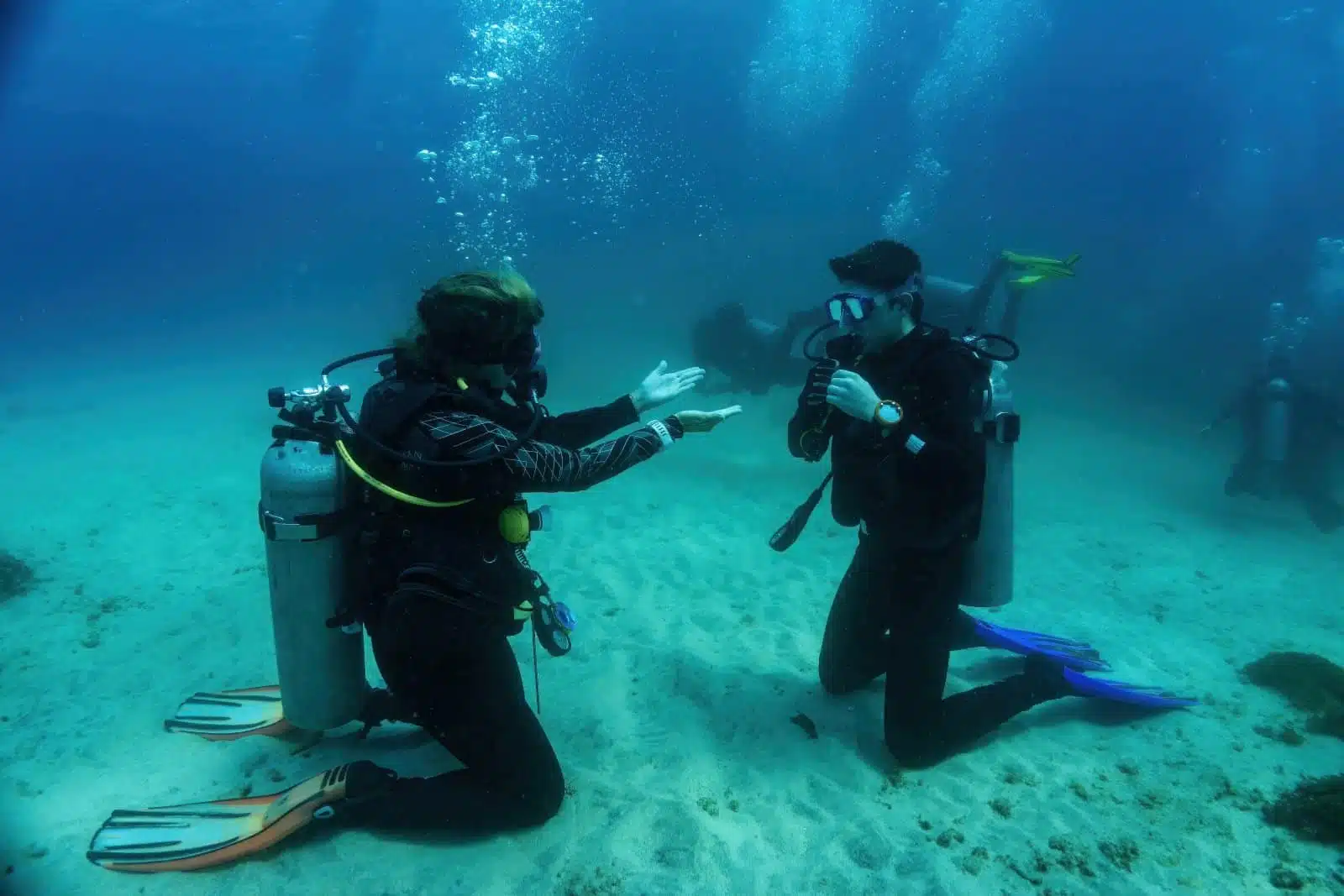
Image Credit: Shutterstock / AlexDreamliner
After completing the PADI Open Water Diver course, divers are often eager to expand their skills and explore more specialized aspects of diving. Further diving courses offer the opportunity to enhance your underwater proficiency, safety, and enjoyment. Here’s an overview of some of the key courses available for divers looking to advance beyond the basics.
Advanced Open Water Diver
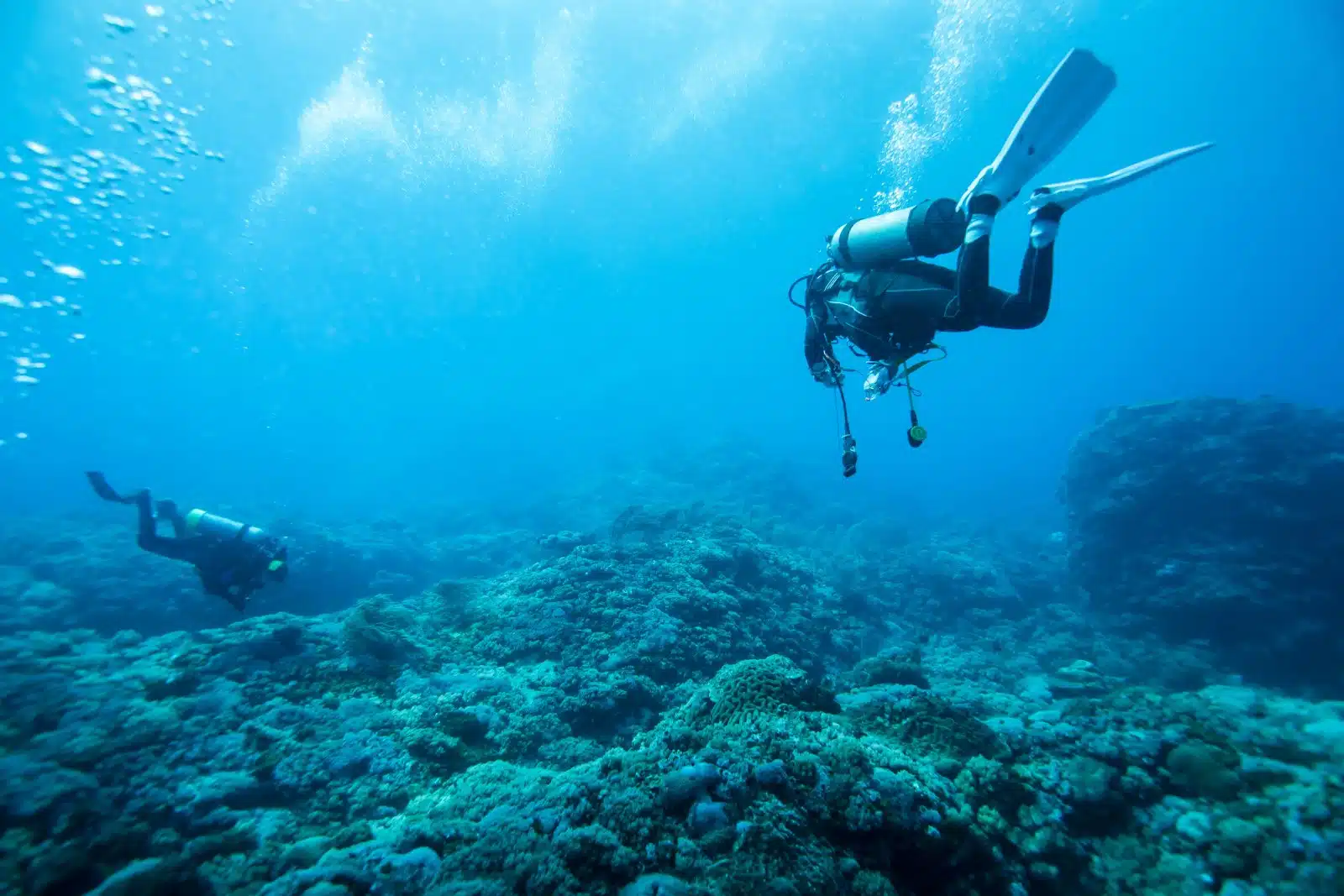
Image Credit: Shutterstock / littlesam
The PADI Advanced Open Water Diver course improves your diving skills and confidence while introducing you to new activities and ways to have fun scuba diving. You’ll try out different specialties while gaining experience under the supervision of your PADI Instructor. The course includes five adventure dives, with the Deep and Underwater Navigation dives being mandatory. You can choose the remaining three dives from various options such as Peak Performance Buoyancy, Night Diver, Wreck Diver, and more. This course can be taken immediately after completing the Open Water Diver certification and is structured to be flexible and performance-based, requiring no formal classroom session.
Insider’s Tip: To get the most out of your Advanced Open Water Diver course, select adventure dives that interest you and challenge you to develop new skills. Consider the local diving conditions and available dive sites to make choices that enhance your diving repertoire. For example, if you’re diving in an area known for its wrecks, the Wreck Diver specialty can provide a fascinating and educational experience.
Rescue Diver
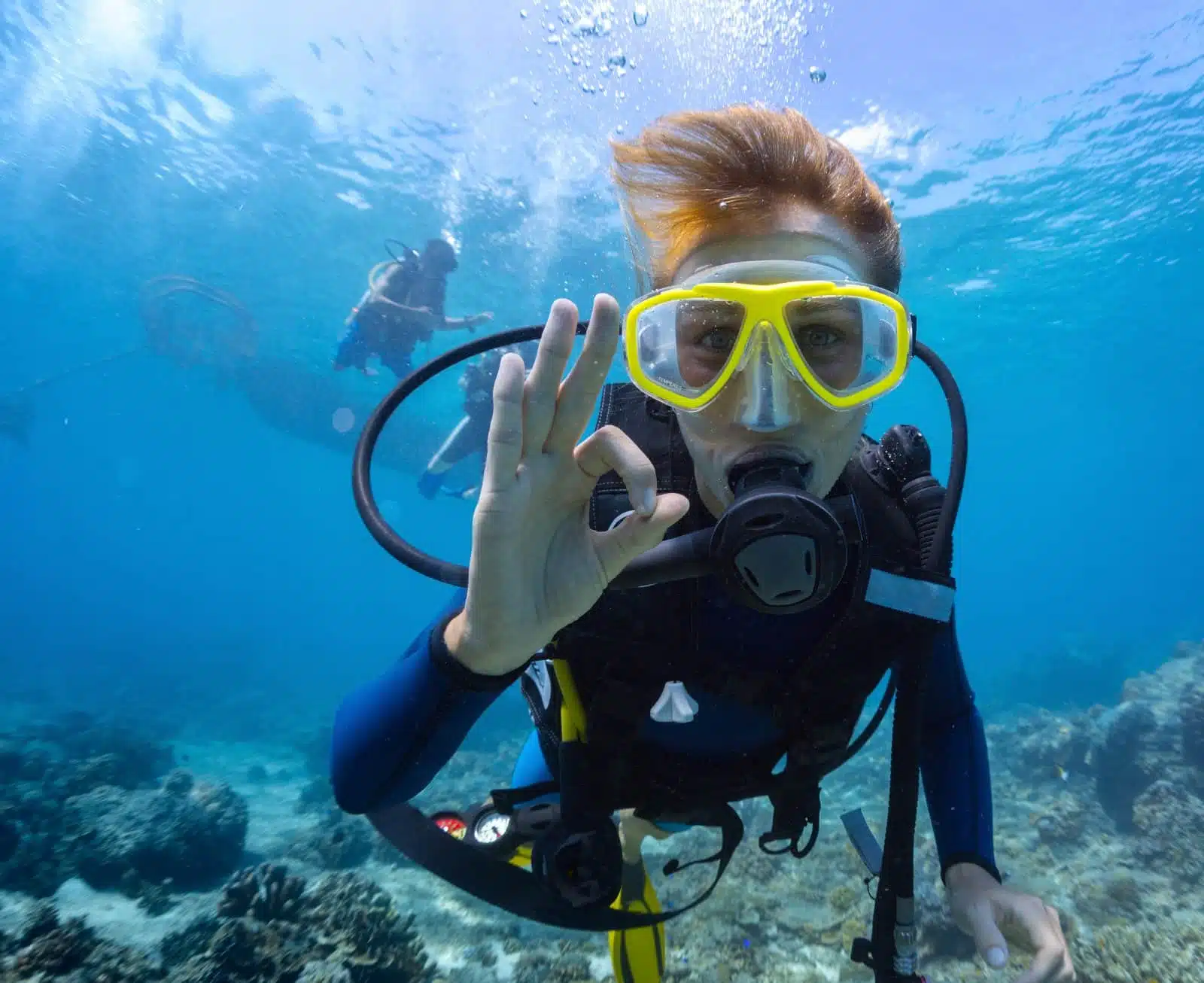
Image Credit: Shutterstock / Dudarev Mikhail
The PADI Rescue Diver course is a pivotal step in a diver’s education, focusing on stress management, emergency prevention, and rescue techniques. It’s designed to teach you how to become a better buddy by practicing problem-solving skills until they become second nature. The course covers self-rescue, recognizing and managing stress in other divers, emergency management and equipment, and rescuing panicked and unresponsive divers. Completing this course enhances your ability to think and act in an emergency, making diving safer and more enjoyable for you and those around you.
Insider’s Tip: Before embarking on the Rescue Diver course, ensure you are comfortable with your basic diving skills and have a solid understanding of dive theory. This course is intensive and requires good physical fitness and a strong commitment to learning. Engage fully in the practical scenarios, as these are invaluable in preparing you for real-life situations.
Specialty Courses
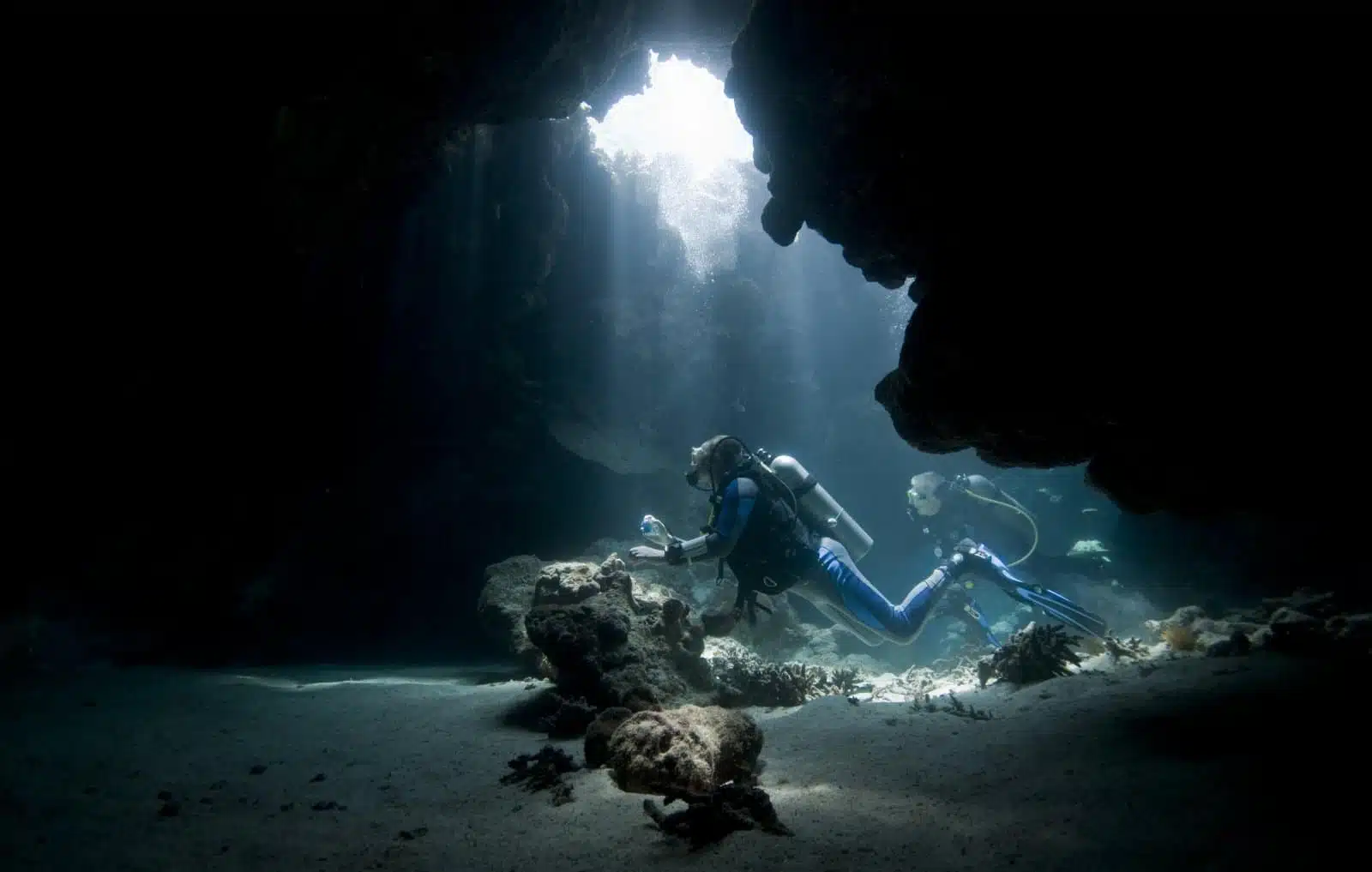
Image Credit: Shutterstock / Dray van Beeck
PADI offers a range of Specialty Diver courses that allow you to focus on specific interests or diving environments. Examples include Deep Diver, Nitrox Diver, Digital Underwater Photographer, Ice Diver, Cave Diver, and many more. Each specialty course focuses on a particular aspect of diving, providing the skills and knowledge to explore specific environments or engage in activities such as underwater photography or videography, deep diving, or night diving. These courses vary in length and requirements, with some necessitating multiple dives over several days.
Insider’s Tip: When choosing a specialty course, consider both your personal interests and the types of diving you plan to do in the future. Also, think about how a particular specialty might enhance your overall diving capabilities. For instance, the Nitrox Diver course is popular because diving with enriched air nitrox can extend your no-decompression limits, allowing you to enjoy longer dives.
Selecting the Right Gear
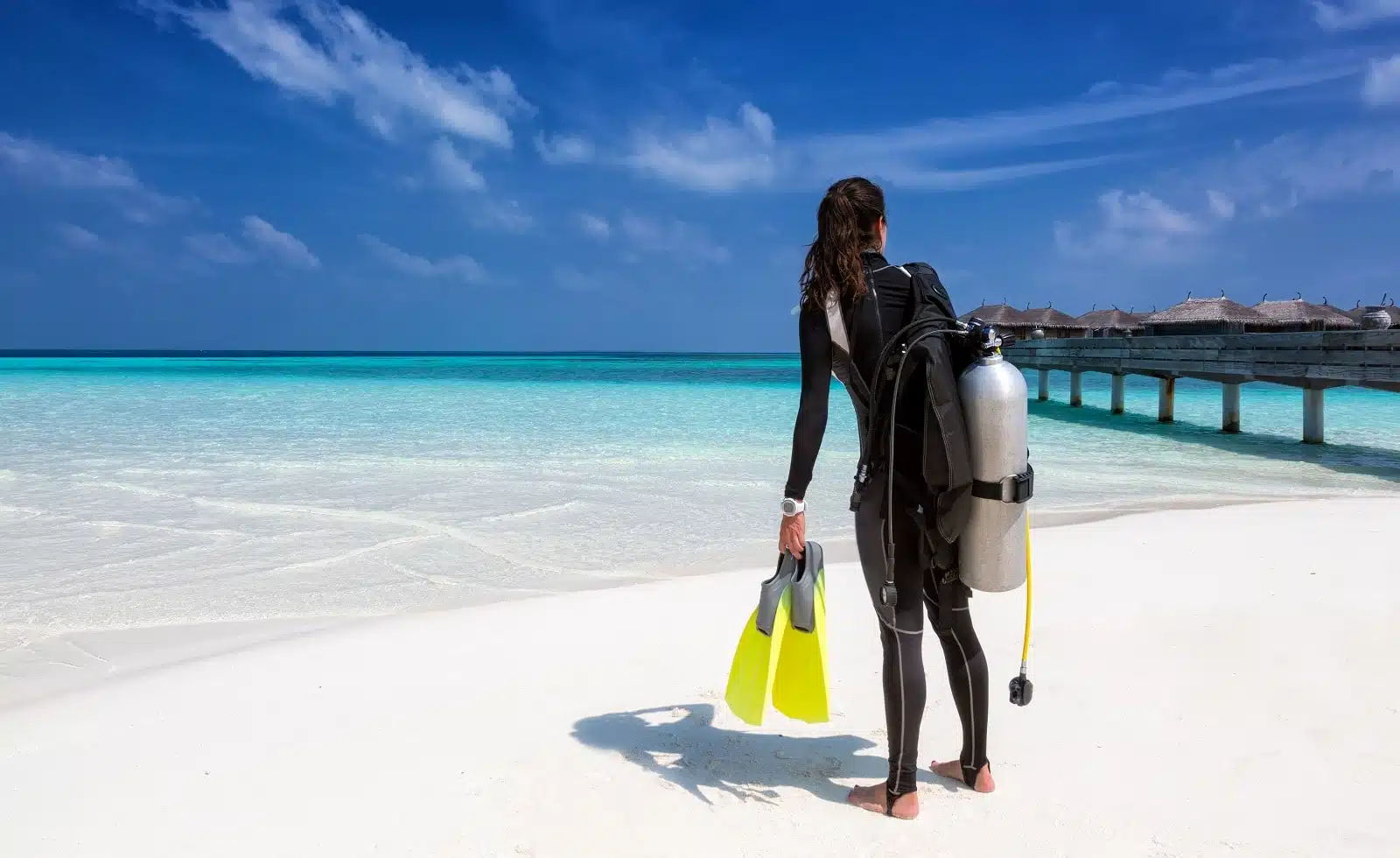
Image Credit: Shutterstock / Sven Hansche
Choosing the right diving gear is pivotal for a comfortable and safe diving experience. This involves selecting a well-fitting mask, a reliable regulator, a buoyancy control device (BCD) that suits your diving style, and the appropriate wetsuit for the water temperature. Quality gear enhances your comfort and safety and improves your overall diving experience.
Insider’s Tip: Rent gear for your first few dives to get a feel for what works best before investing in your own set. Pay special attention to how the mask fits and ensure no water leaks during your dive. Comfort and clarity are key.
Mastering Buoyancy Control
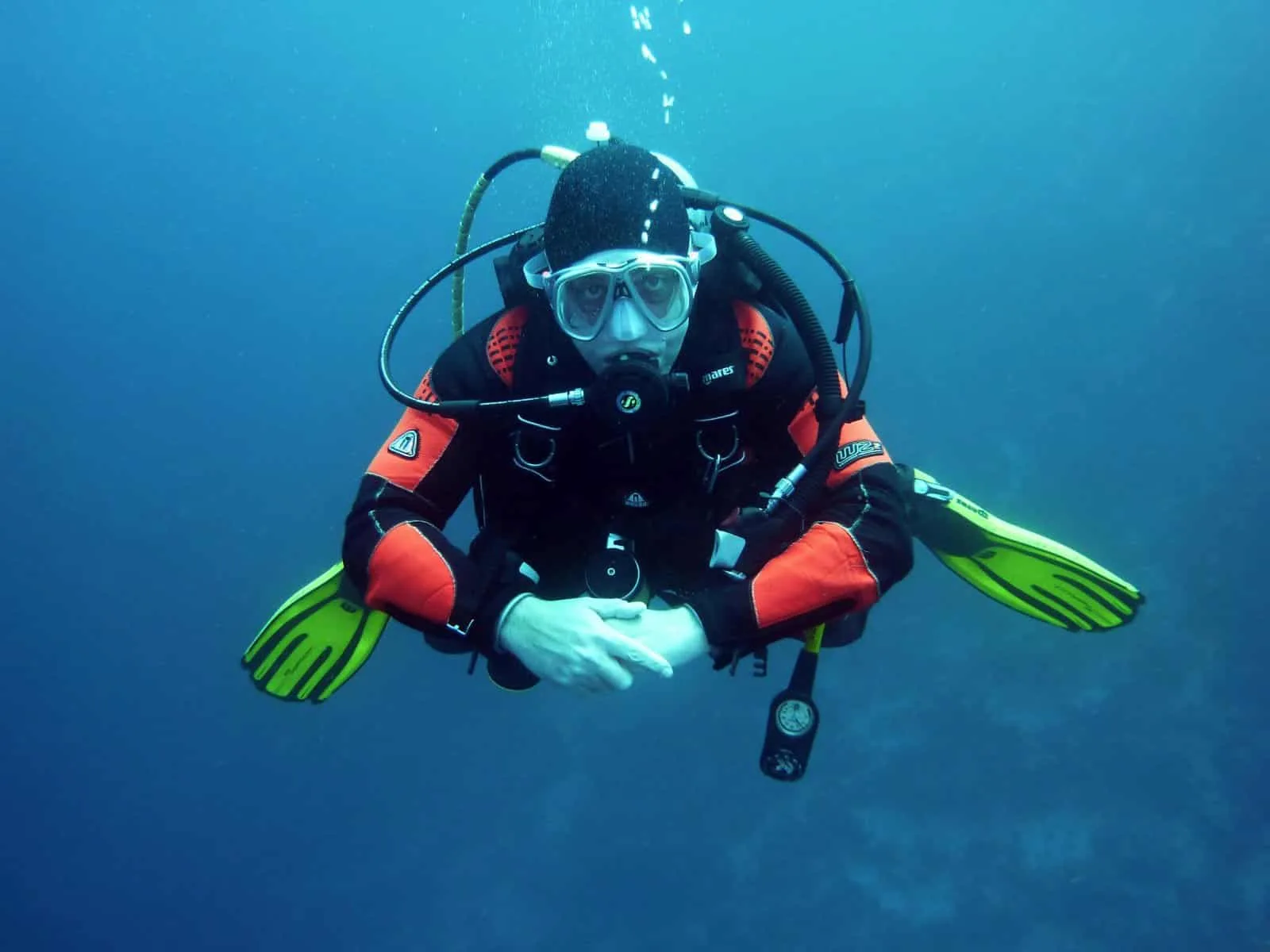
Image Credit: Pexels / Pixabay
Buoyancy control is arguably the most important skill in scuba diving. Achieving neutral buoyancy allows divers to hover effortlessly in the water, minimizing energy expenditure and reducing the risk of damaging marine life. It requires a good understanding of adjusting your buoyancy control device and proper weighting.
Insider’s Tip: Practice in a pool or calm shallow water before attempting more challenging dives. Focus on breathing techniques, as your breath control plays a significant role in maintaining neutral buoyancy.
Dive Planning and Safety
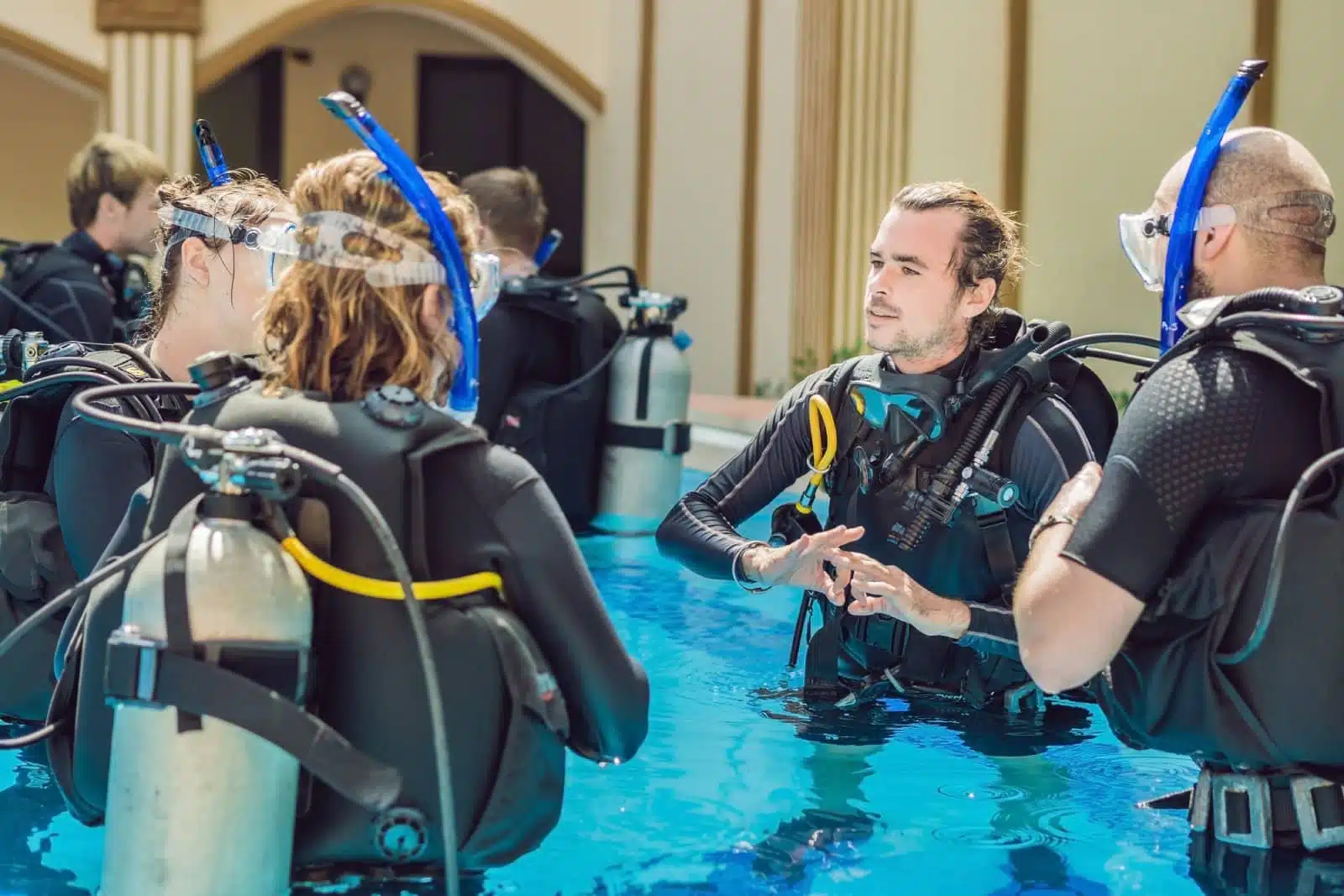
Image Credit: Shutterstock / Elizaveta Galitckaia
Effective dive planning and adherence to safety protocols are essential to ensure enjoyable and safe diving experiences. This includes checking weather conditions, understanding dive site profiles, setting limits for depth and time, and establishing clear communication signals with your dive buddy. Always remember to plan your dive and dive your plan.
Insider’s Tip: Use a dive computer to accurately monitor your depth, bottom time, and safety stops. This invaluable tool helps manage your dive profile and ensures adherence to safety guidelines.
Where to Learn
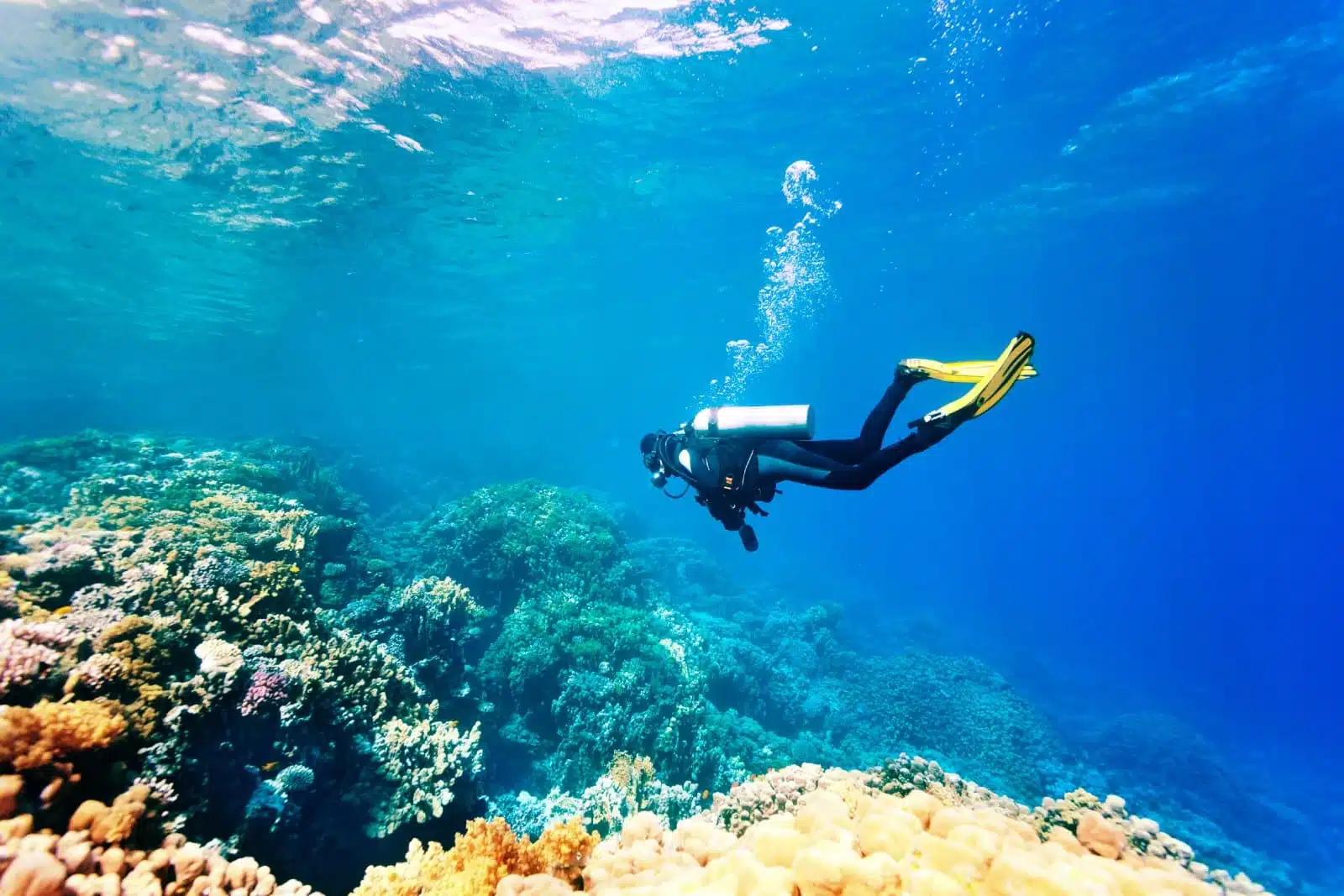
Image Credit: Shutterstock / Sergiy Zavgorodny
Choosing the right place to learn scuba diving is pivotal, as it influences not just your ability to master diving techniques but also your overall enthusiasm for underwater exploration. The ideal spots for beginner divers combine clear waters, rich marine biodiversity, and reputable dive centers offering certifications like PADI. These locations ensure a learner’s first foray into the underwater world is both safe and mesmerizing. From the coral-rich ecosystems of the Great Barrier Reef to Southeast Asia’s vibrant underwater life and the Galapagos Islands’ unique diving experiences, each destination provides a unique backdrop for diving education. Such places promise excellent visibility and diverse marine life and adhere to the highest diving instruction and safety standards.
Selecting a premier diving destination like Koh Samui in Thailand or Bonaire in the Caribbean can significantly enhance learning. These locations offer the perfect conditions for beginners—calm waters, extensive underwater fauna, and professional diving schools. Furthermore, diving in these iconic spots allows new divers to immerse themselves in some of the most spectacular underwater environments on the planet, turning the learning experience into an unforgettable adventure. Whether it’s gliding past colorful coral reefs, exploring historical wrecks, or encountering majestic sea creatures, the right diving location sets the stage for a lifelong passion for diving, equipped with the skills and confidence to explore the oceans of the world.
Koh Samui, Thailand
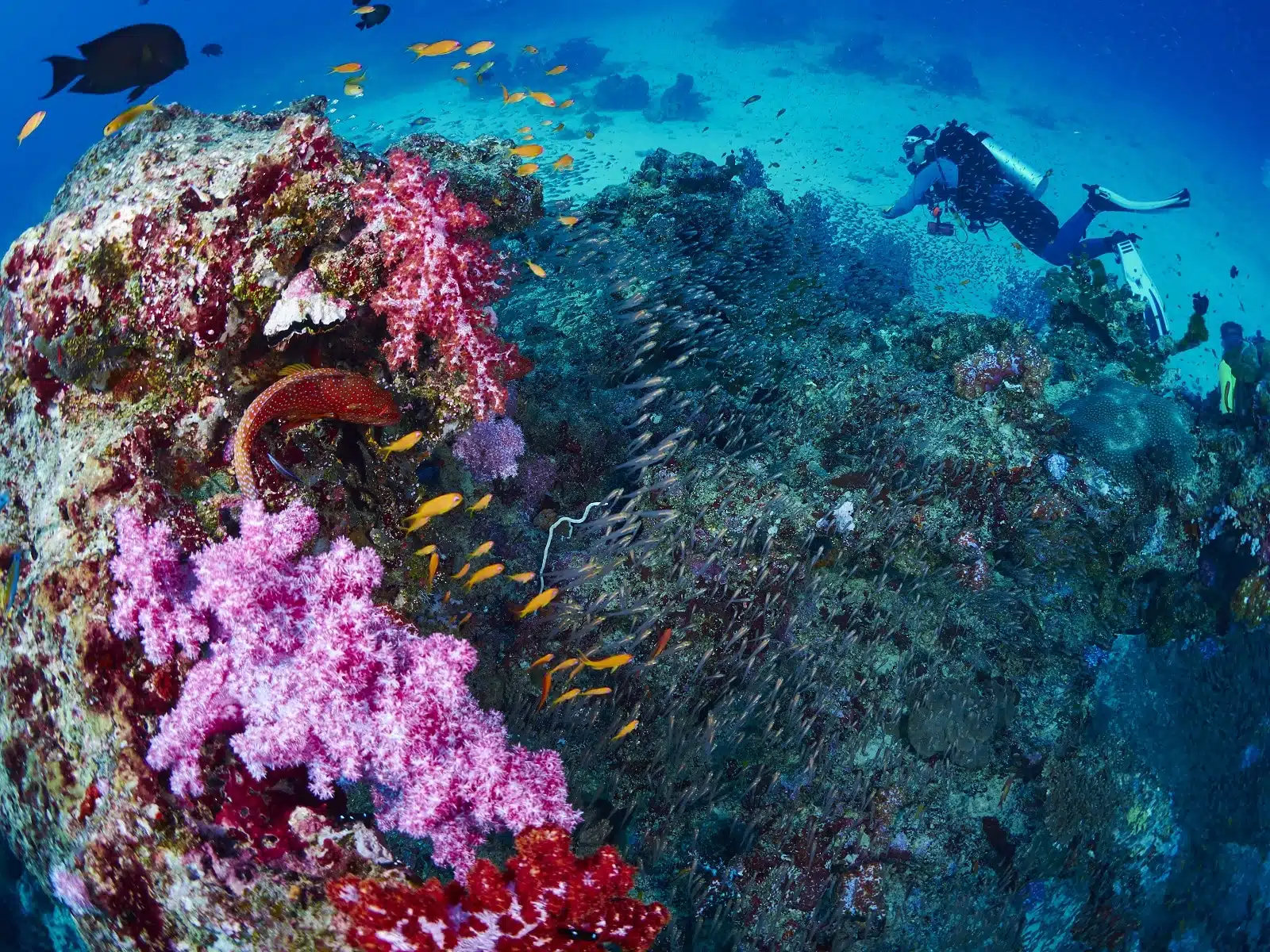
Image Credit: Shutterstock / metha1819
Koh Samui, Thailand’s serene island paradise, offers an idyllic setting for diving enthusiasts to embark on underwater adventures. Renowned for its crystal-clear waters, vibrant coral reefs, and diverse marine life, Koh Samui presents an unparalleled diving experience. Discovery Divers is central to this diving haven, a premier dive center known for its commitment to safety, personalized instruction, and exceptional diving tours. With a team of experienced and PADI-certified professionals, Discovery Divers ensures that every dive is an enjoyable yet comprehensive learning experience. Whether taking your first breath underwater or looking to advance your diving skills, Discovery Divers offers a range of courses and excursions that cater to all levels, set against the backdrop of Koh Samui’s breathtaking marine landscapes.
Insider’s Tip: When diving with Discovery Divers in Koh Samui, take advantage of the smaller group sizes for a more personalized and immersive diving experience. Ask about their special trips to lesser-known dive sites around the island, where you can escape the crowds and encounter a wide array of marine life in peaceful solitude. Additionally, timing your visit during the island’s dry season, from December to February, ensures the best visibility and water conditions, making your diving adventure even more spectacular.
The Great Barrier Reef, Australia
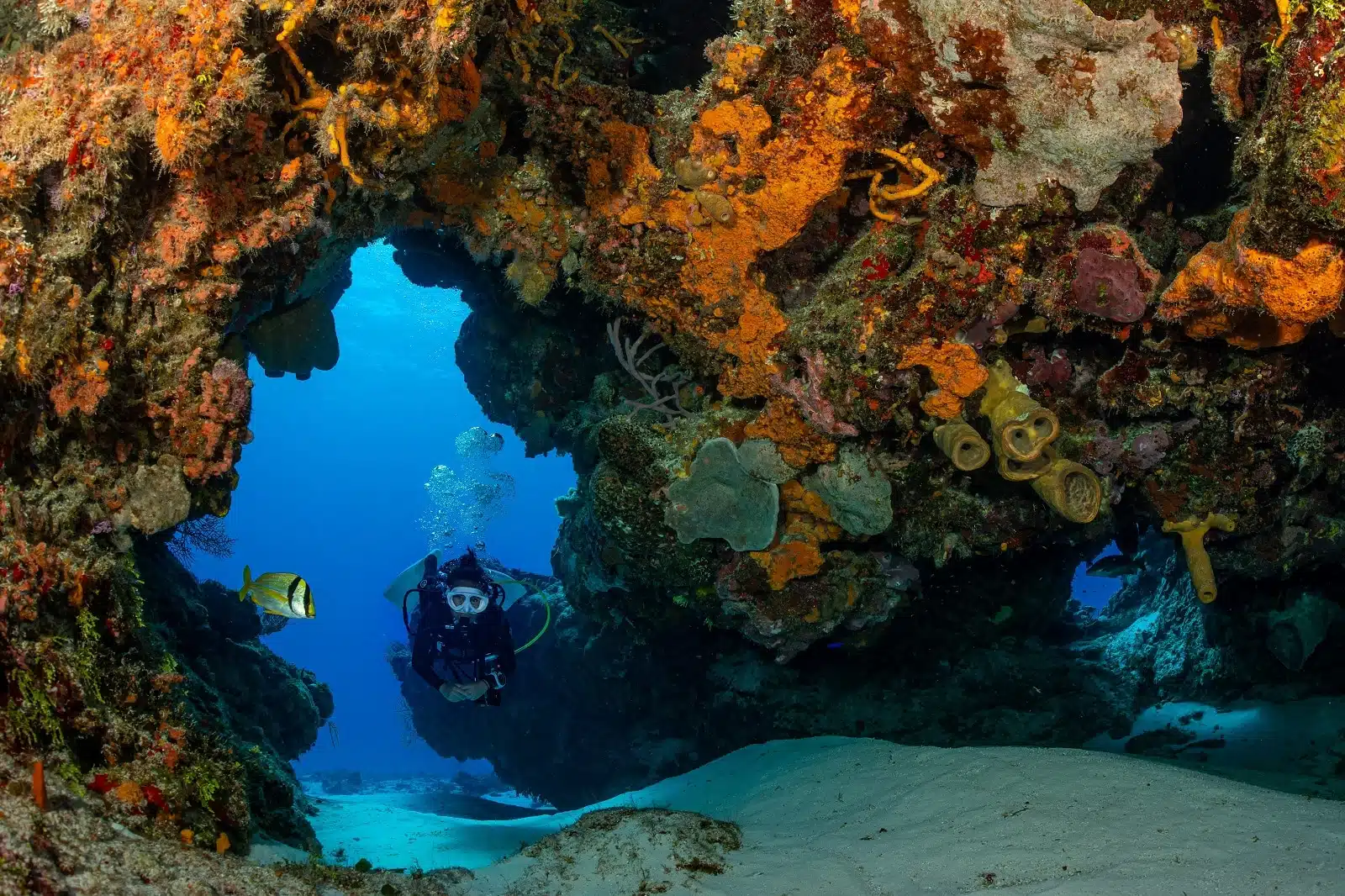
Image Credit: Shutterstock / Subphoto.com
The Great Barrier Reef is a premier destination for divers, offering an unparalleled underwater experience. Home to an astonishing array of marine life and coral species, diving here allows you to witness the vibrant ecosystem of the world’s largest coral reef system.
Insider’s Tip: Visit during the Australian winter (June to August) for the best visibility and water conditions. Consider diving from a liveaboard to access more remote areas of the reef that day boats don’t reach.
Wreck Diving – The SS Thistlegorm, Red Sea, Egypt
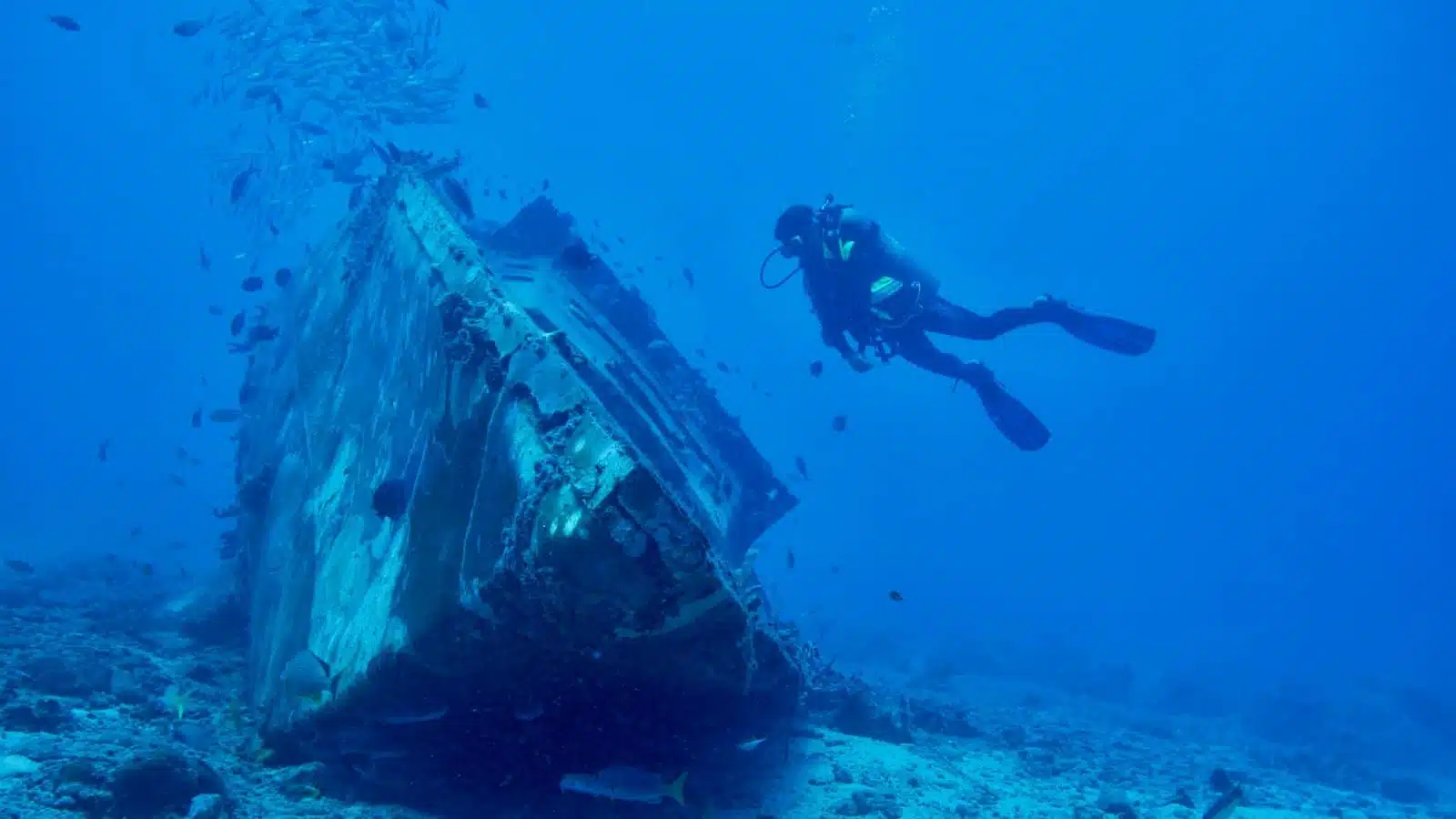
Image Credit: Pexels / Pascal Ingelrest
Wreck diving offers a fascinating glimpse into history, and the SS Thistlegorm in the Red Sea is one of the most iconic wreck dives. Sunk during World War II, this British merchant navy ship is now a thriving artificial reef, home to a diverse range of marine life.
Insider’s Tip: Advanced certification is essential due to the depth and potential currents. Bring a flashlight to explore the interior compartments and cargo holds.
Cavern Diving – Cenotes, Mexico
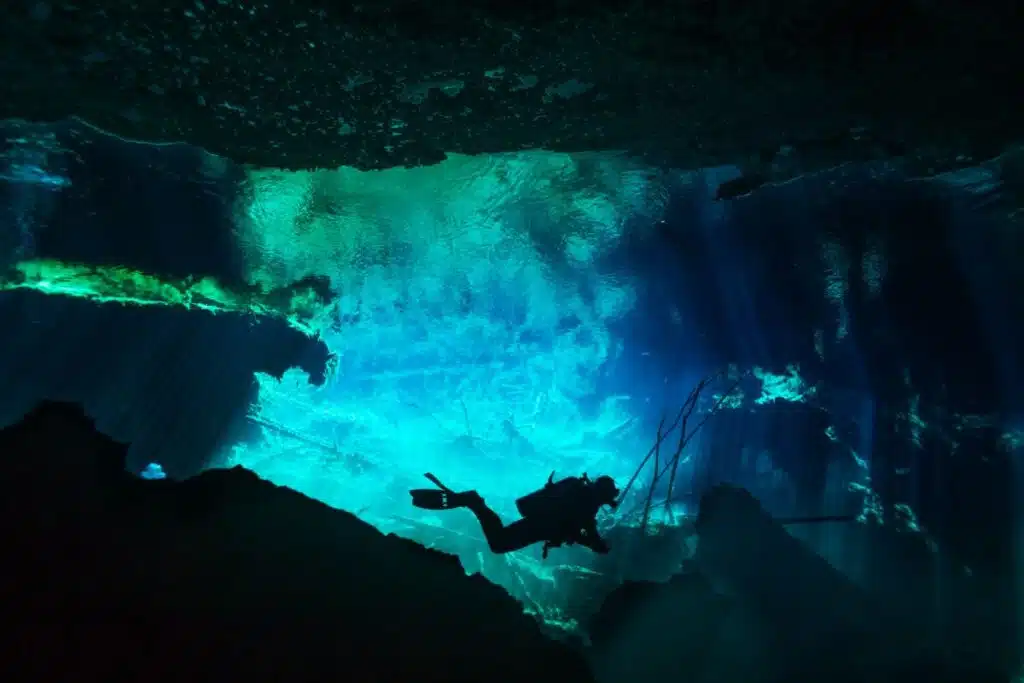
Image credit: Shutterstock / Sergey Novikov
The cenotes of Mexico offer a unique cavern diving experience, with crystal-clear freshwater, stunning geological formations, and rays of sunlight creating a mystical atmosphere. These natural sinkholes provide the opportunity to explore the extensive underground river systems of the Yucatan Peninsula.
Insider’s Tip: Opt for a guided dive with a certified cavern or cave diving instructor, even if you’re an experienced diver. Their knowledge of the cenote systems ensures a safe and memorable dive.
Night Diving
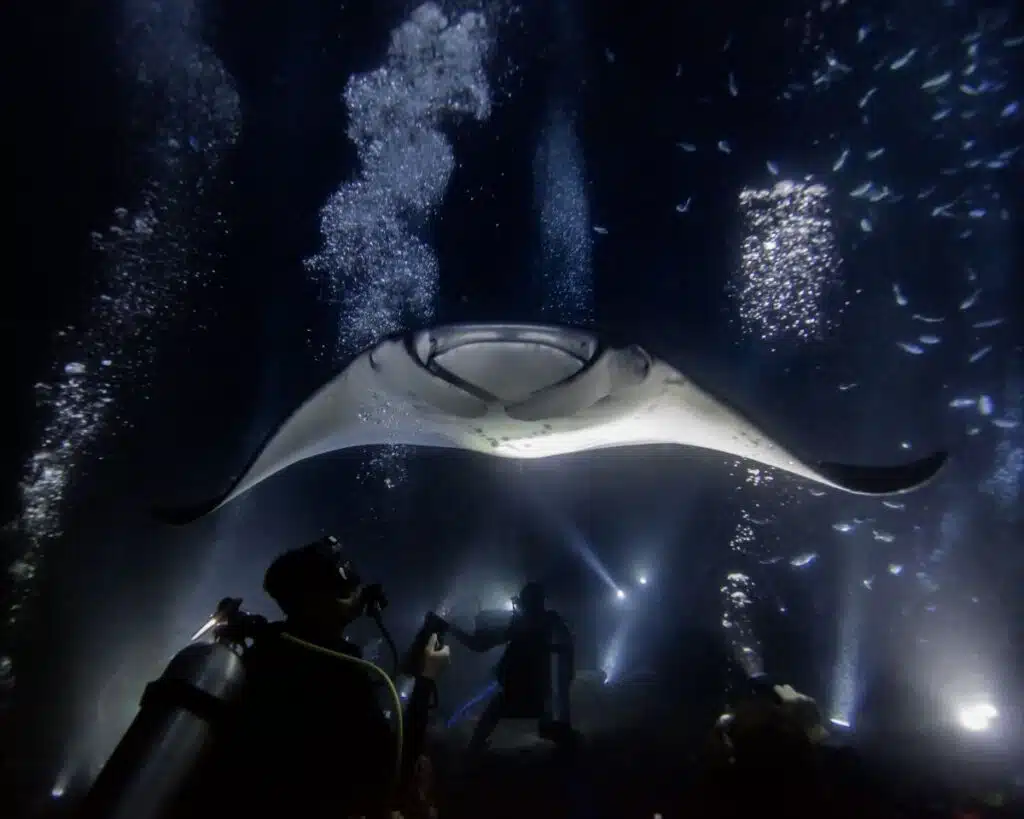
Image credit: Shutterstock / Sean Steininger
Night diving unveils a different aspect of the underwater world, as nocturnal marine life emerges and coral polyps open up to feed. It’s a surreal and exhilarating experience that offers a new perspective on familiar dive sites.
Insider’s Tip: Always dive a site during the day before attempting a night dive there. Familiarity with the environment significantly enhances safety and enjoyment.
Underwater Photography
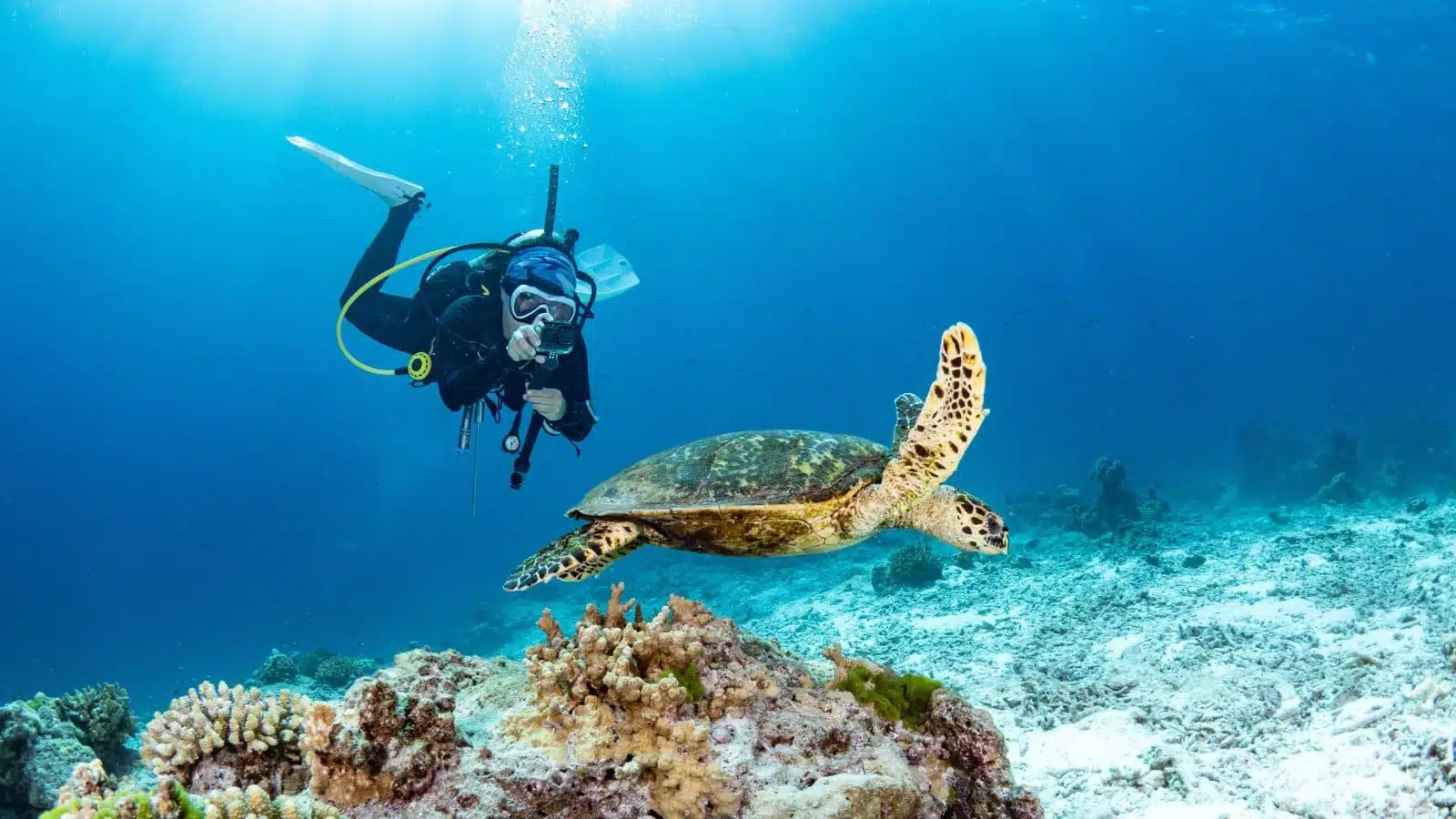
Image Credit: Shutterstock / Summer Paradive
Capturing the beauty of the underwater world through photography is a rewarding but challenging. It requires knowledge of underwater camera settings, lighting techniques, and composition to produce stunning images that convey the essence of your dive experiences.
Insider’s Tip: Start with a compact underwater camera or waterproof housing for your smartphone—practice in shallow waters to hone your skills before tackling more ambitious shots.
Conservation-Focused Diving
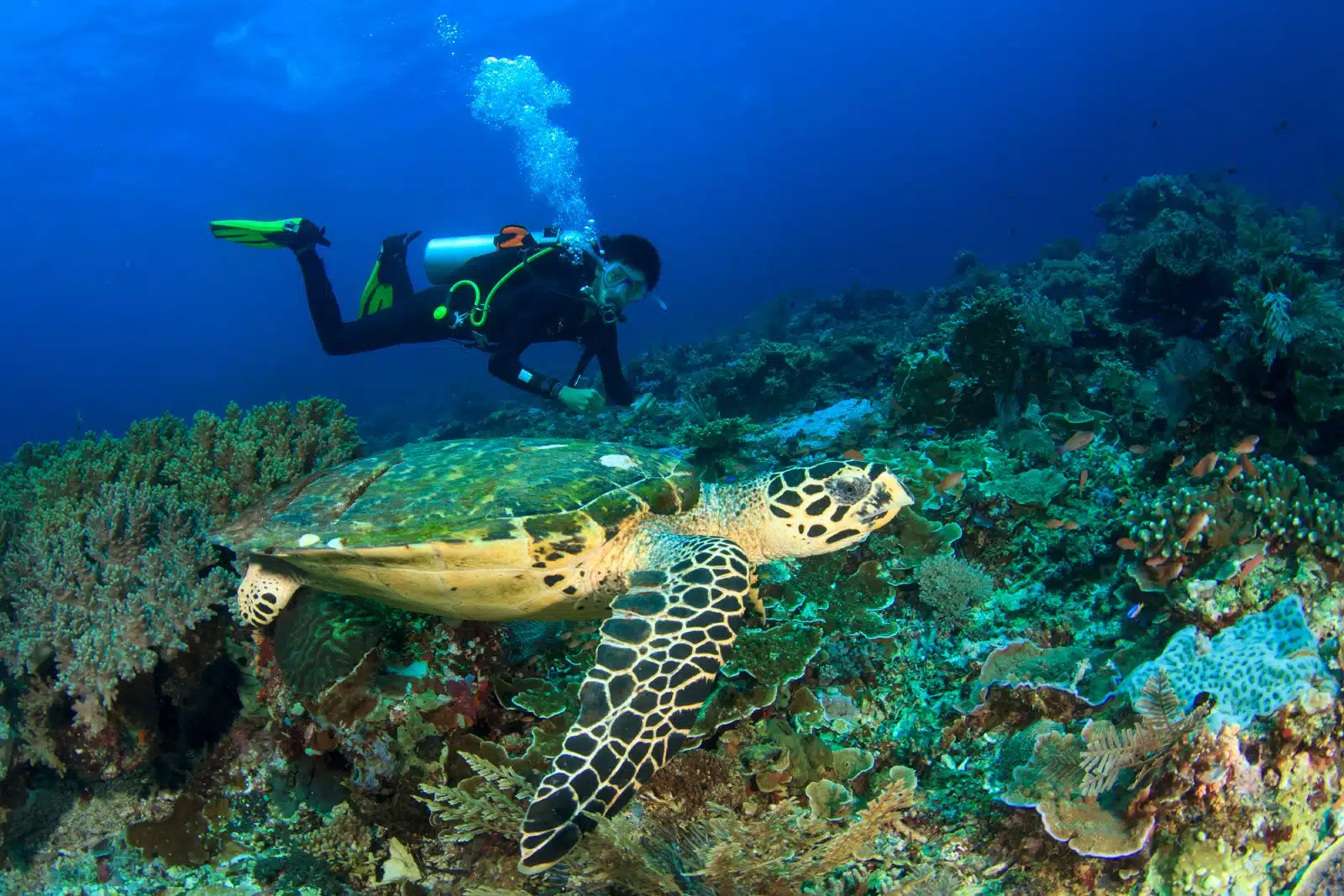
Image Credit: Shutterstock / Rich Carey
Conservation-focused diving allows divers to contribute to the preservation of marine ecosystems. Participating in coral reef restoration projects, invasive species removal, and citizen science initiatives are just a few ways divers can make a positive impact.
Insider’s Tip: Seek out dive operators and organizations prioritizing ecological sustainability and offering conservation programs. Your participation enriches your diving experience and helps protect the underwater environments you love.
Ice Diving
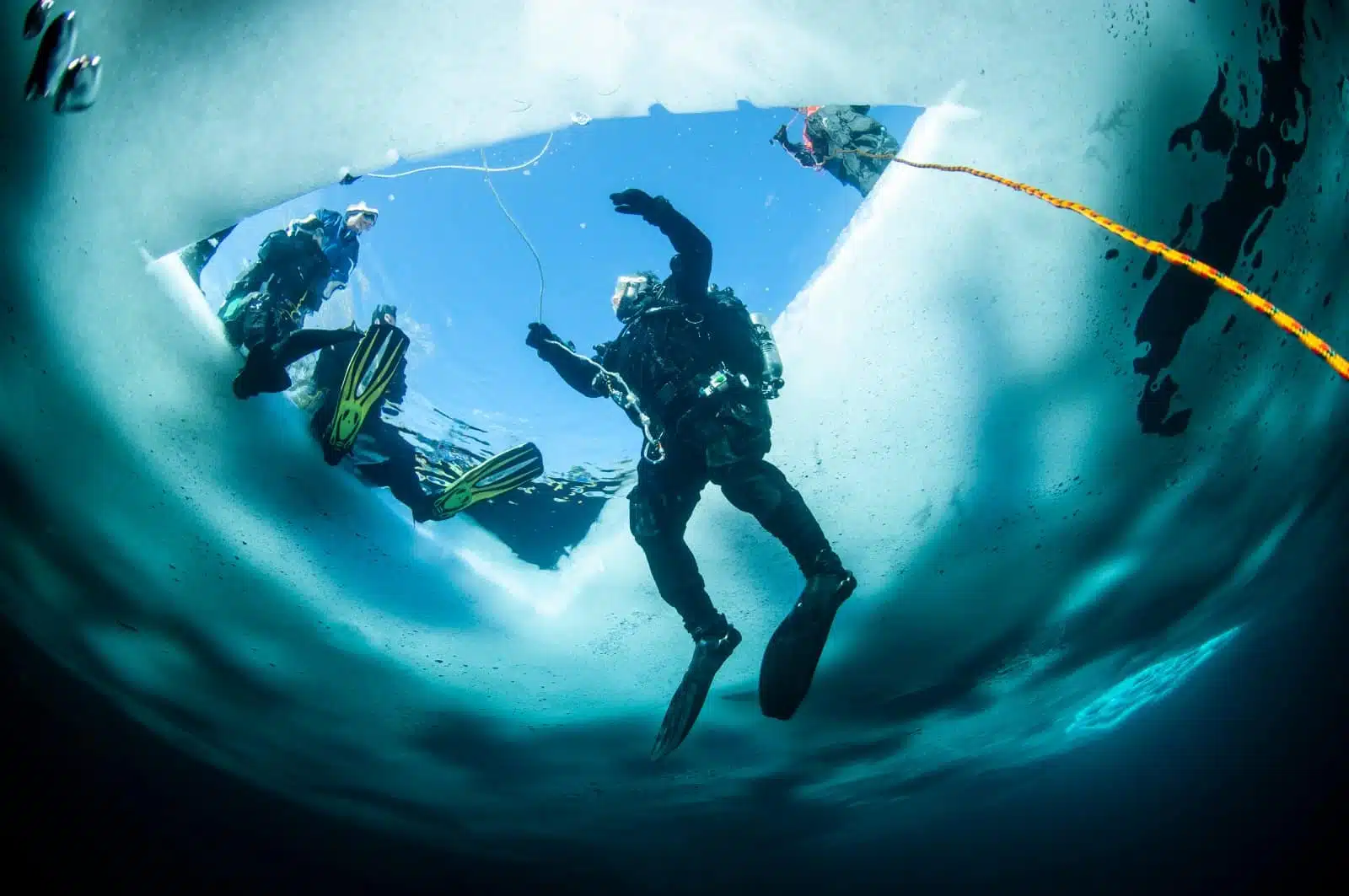
Image Credit: Shutterstock / RLS Photo
Ice diving is an extreme form of diving that offers a serene and otherworldly experience. Diving under ice presents unique challenges and rewards, including crystal-clear waters and observing species adapted to cold environments.
Insider’s Tip: This type of diving requires specialized training and equipment. Ensure you’re adequately prepared and accompanied by experienced ice divers or instructors.
Deep Diving
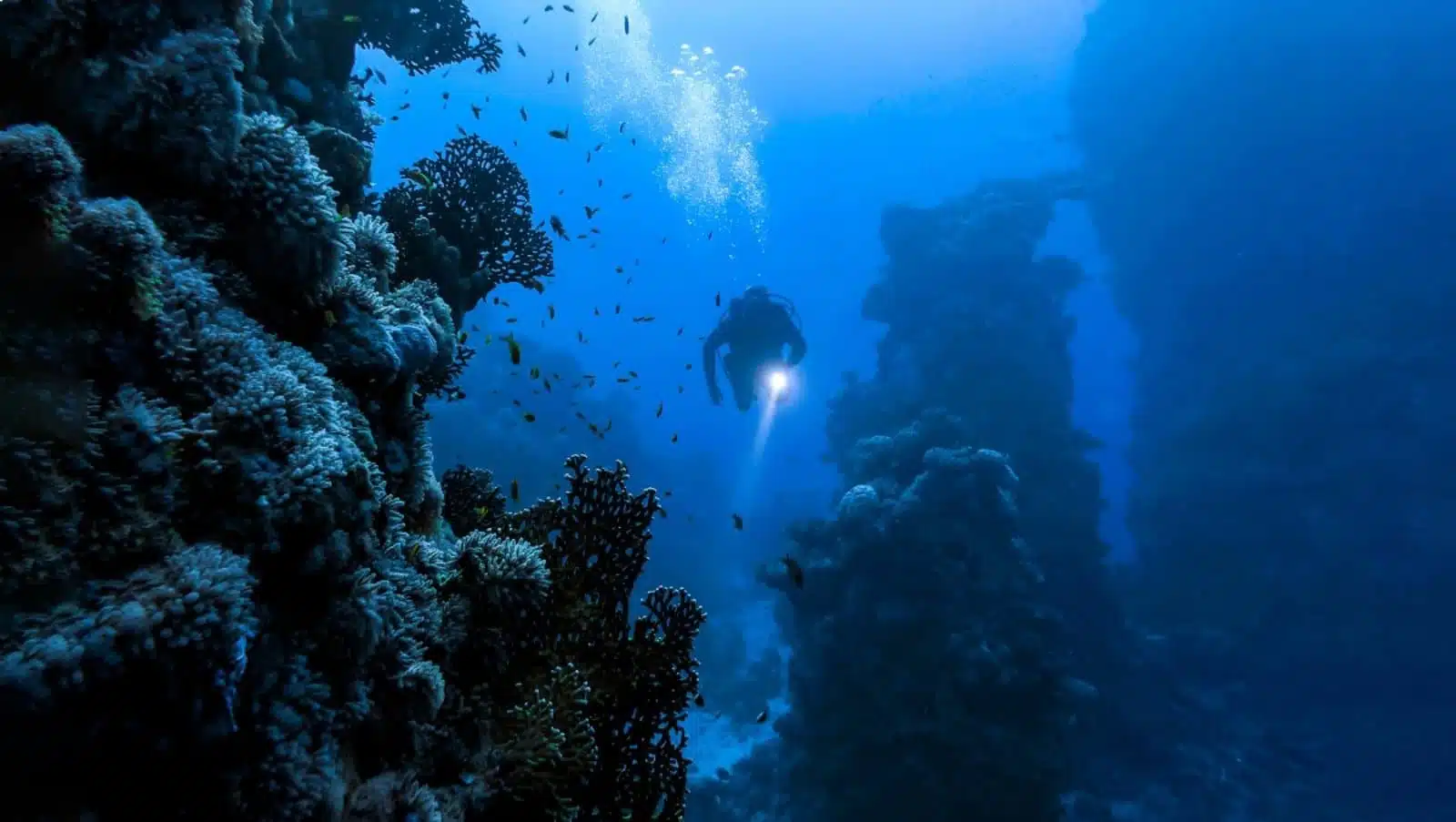
Image Credit: Shutterstock / Lillac
Deep diving allows adventurous divers to explore beyond the limits of recreational diving depths, offering the chance to discover untouched wrecks, deep reefs, and pelagic marine life. It requires additional training, experience, and respect for the increased risks associated with deeper depths.
Insider’s Tip: Pursue advanced and deep diver certifications through reputable diving organizations. Gradually gaining experience and diving within your limits are key to enjoying deep diving safely.
The Bottom Line
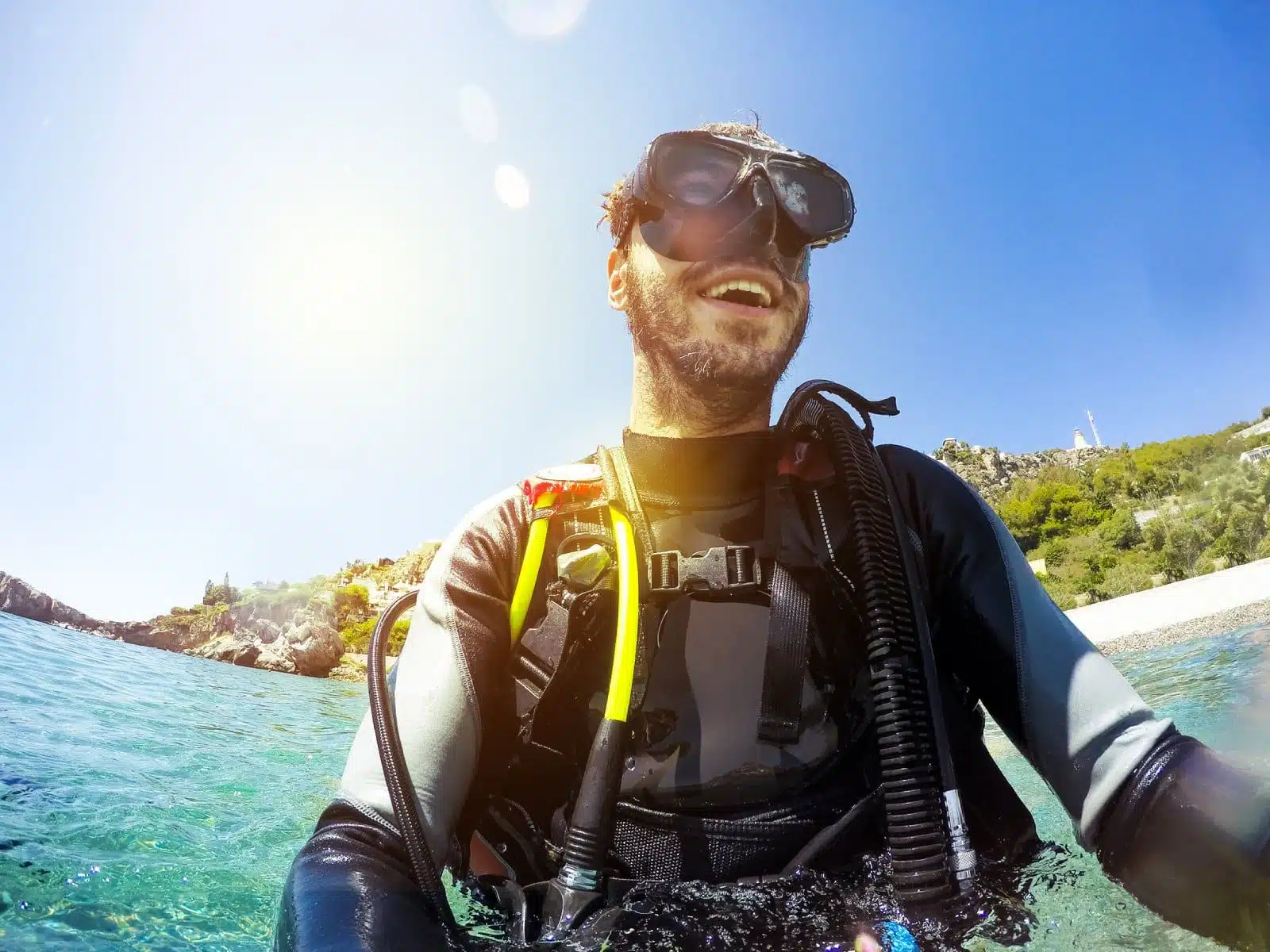
Image Credit: Shutterstock / David MG
Embarking on your diving journey in a location renowned for its clarity, biodiversity, and expert instruction is essential for a fulfilling and safe introduction to the underwater world. From the vibrant ecosystems of Thailand to the iconic dive sites around the globe, each destination offers a unique blend of natural beauty and diving excellence. As you progress from a novice to a seasoned diver, the choice of dive center and location plays a pivotal role in shaping your skills, confidence, and passion for diving. Remember, the proper preparation, education, and environment are key to unlocking the ocean’s wonders. Choose wisely, dive safely, and embrace the endless adventures beneath the waves. The underwater world is vast and filled with mysteries waiting to be explored; with the proper foundation, you can embark on this journey with assurance and awe.
More From The Green Voyage
Top 10 Trending Travel Destinations 2024
6 Essential Banking Apps for International Travel – Managing Your Finances on the Go
Traveling With Kids – 10 Tips to Create Memorable Family Holidays
The post Learn How to Dive 2024 – Discovering an Underwater World first appeared on The Green Voyage.
Featured Image Credit: Shutterstock / Lillac.
For transparency, this content was partly developed with AI assistance and carefully curated by an experienced editor to be informative and ensure accuracy.
Tips for Trip Success
Book Your Flight
Find an inexpensive flight by using Kayak, a favorite of ours because it regularly returns less expensive flight options from a variety of airlines.
Book Your Hotel or Special Accommodation
We are big fans of Booking.com. We like their review system and photos. If we want to see more reviews and additional booking options, we go to Expedia.
You Need Travel Insurance!
Good travel insurance means having total peace of mind. Travel insurance protects you when your medical insurance often will not and better than what you get from your credit card. It will provide comprehensive coverage should you need medical treatment or return to the United States, compensation for trip interruption, baggage loss, and other situations.Find the Perfect Insurance Plan for Your Trip
